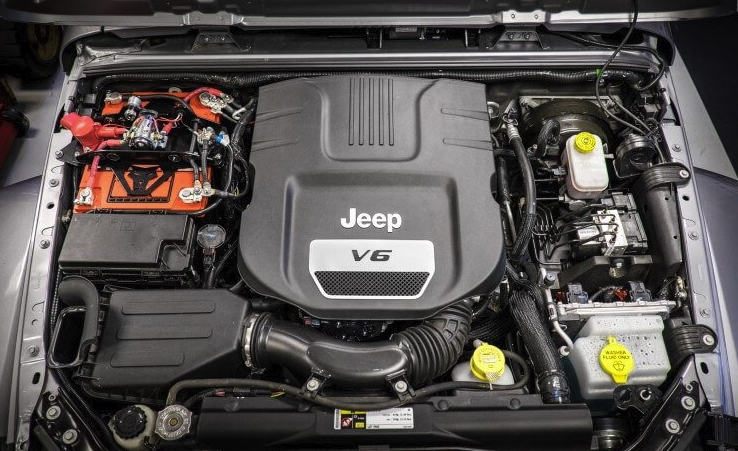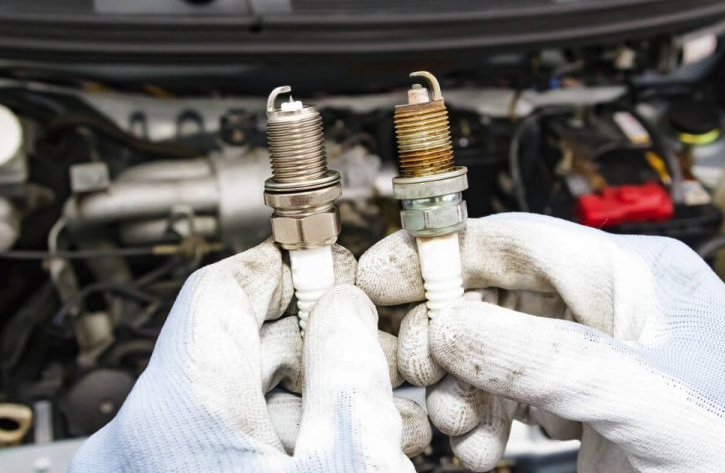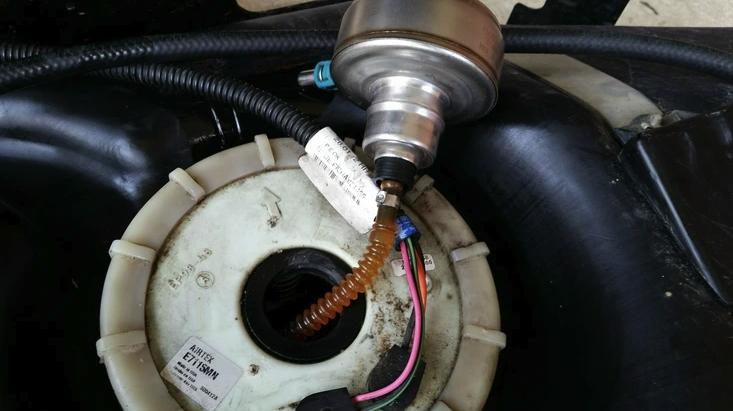When you see a warning light on your Jeep's dashboard resembling a car with a key, it means the start-stop system is operational and functioning correctly. This indicator is crucial for confirming that the system is active. Continue reading for additional insights into the workings of the Jeep start-stop system and the significance of this indicator light.
What is the Jeep Start Stop System Warning Light?
The Jeep Start Stop System Warning Light activates when the Jeep's start/stop system is in use. This technology helps conserve fuel and decrease emissions by automatically turning off the engine when the car is stationary. The light serves as a reminder for drivers to release the brake pedal while stationary, allowing the system to activate and optimize fuel savings.
Why Does the Jeep Start-Stop System Warning Light Come On?
There are several factors that can trigger the Jeep Start Stop System Warning Light. Issues with the battery, starter, or alternator are common causes. When this light illuminates, it's crucial to have your Jeep inspected by a professional mechanic to identify and fix the underlying problem promptly.
Jeep Battery Failure (Flashing Amber Warning Light)

In the complex system of a Jeep, two batteries are crucial: the main and the auxiliary. When the Jeep Start Stop System light comes on, it often indicates a problem with the auxiliary battery. This light, either amber or flashing amber, serves as a warning of a malfunction.
Causes of Auxiliary Battery Failure
Several factors can lead to the failure of the auxiliary battery:
- Natural wear and tear that diminishes battery life.
- Incorrect placement of the battery.
- Usage of a battery that does not properly fit.
- Dirty or worn battery cables.
- Overuse of electrical accessories.
- Poorly adjusted battery cables.
- A defective battery.
In cases where the auxiliary battery is underutilized, it may degrade over time, failing to serve its intended purpose effectively.
Solution for Battery Failure
To address issues with the auxiliary battery in a Jeep, follow a systematic process of battery replacement:
Step 1: Begin by locating the auxiliary battery, which is hidden beneath the fuse box. This area is secured by two 10mm bolts at the top, which need to be removed with a bolt extractor. Additionally, another 10mm bolt inside the area must be freed.
Step 2: Next, remove the fuse box cover by unscrewing four 7mm bolts using the same bolt extractor. Inside the fuse box, you'll find six 10mm bolts lined up along one side. These bolts must be carefully removed, ensuring to keep track of their order.
Step 3: After all bolts are removed, you'll see four tabs on each side of the fuse box. Use a screwdriver to gently pry them open. Ensure all connections behind the fuse box are carefully disconnected. This will expose two more 10mm bolts and one 7mm bolt that also need to be removed.
Step 4: Carefully lift the battery from its compartment. If the new battery does not have posts, use an E6 socket to remove the posts from the old battery and install them on the new one.
Step 5: Place the new battery in its designated spot and reassemble the cover. Make sure all bolts are returned to their original positions. Pay close attention to the connection sequence under the fuse, which should follow the order of blue, white, gray, and black.
By following these steps, you should successfully replace the auxiliary battery and restore the functionality of the Jeep Start Stop System. Remember to double-check each step to ensure all parts are correctly aligned and secured.
Jeep Spark Plug Complications

The issues with ailing spark plugs manifest through the Jeep's stop/start system, indicated by an amber or flashing warning light. Symptoms include reduced fuel efficiency, poor acceleration, rough idling, and difficulty starting the engine.
Causes of Spark Plug Failure
Several issues can lead to spark plug problems:
- Inferior quality wire leads can damage spark plugs.
- A fuel mix that is too rich or lean, or contaminated with carbon, can impair spark plugs.
- Engine oil leaks, which coat the spark plugs in oil and grease, can cause failure.
- Coolant leaks that compromise spark plug integrity.
- Inappropriate use of fuel additives like octane boosters or fuel injector cleaners.
- Overheating of spark plug tips can lead to their deterioration.
Solution for Spark Plug Replacement
Replacing faulty spark plugs is typically the best solution. Here's how to replace spark plugs on your own:
Step 1: Begin by disconnecting all electrical connections to the ignition coil. Remove the ignition coil carefully.
Step 2: Use compressed air to clear any debris or impurities from around the spark plug tubes.
Step 3: Carefully remove the old spark plugs using a ratchet equipped with a spark plug socket.
Step 4: Set the gap on the new spark plugs using a gap gauge, following the specifications in the owner's manual.
Step 5: Install the new spark plugs and secure them with a torque wrench. Reattach the ignition coil and restore all electrical connections.
To prevent future issues with spark plugs, it is advisable to choose high-quality spark plugs made from materials such as copper, platinum, or double platinum. Additionally, regular maintenance of the FCW sensor is recommended to maintain optimal engine performance.
Jeep Fuel Issues

Fuel-related problems often afflict Jeep Wranglers and are indicated by the service stop/start system light on Jeep Cherokees. Common symptoms include a whining sound from the fuel tank, difficulty starting the Jeep, and a noticeable lack of power.
Causes of Fuel Issues
Fuel system issues in Jeeps are commonly due to:
- A blocked fuel injection system.
- Clogged or leaking fuel lines.
- A blocked fuel filter.
- Fuel pump malfunctions.
- Using the wrong type of gasoline.
Solution for Fuel Issues
Addressing fuel problems involves several steps:
Step 1: Start by inspecting the fuel tank, which must allow air exchange as fuel levels and temperatures change. Ensure that your fuel tank is functioning correctly.
Step 2: If the engine is lacking power, investigate potential causes such as electrical faults, fuel pump issues, or leaks. If these aren’t the problem, refill the fuel tank to the appropriate level.
Step 3: Examine fuel delivery to assess if the fuel system is providing adequate fuel. Check the fuel pressure and volume and monitor the fuel pump’s amperage.
Step 4: If the fuel pump is malfunctioning, replace it. This process is detailed in the owner’s manual and, though challenging, is a manageable task.
Step 5: Always ensure the fuel used is compatible with your Jeep. Adjust the fuel type and quantity as necessary.
Other potential issues that could affect your Jeep include:
- A defective starter motor.
- A malfunctioning brake pedal switch.
- Problems with the transmission range sensor.
- Incorrect gear selection issues.
Each issue requires a specific approach to troubleshoot and resolve effectively.
Resolving the Jeep Start-Stop System Warning Light Issue
When the start-stop system warning light is illuminated on your Jeep's dashboard, it indicates a malfunction within the system. Here's how to address this issue:
Start by inspecting the start-stop system's fuse. If you discover the fuse is blown, replace it immediately with a new one.
Next, evaluate the start-stop system switch for any defects. If found faulty, replace the switch with a new one to ensure proper functionality.
Should these steps not resolve the problem, it is advisable to seek the expertise of a qualified mechanic who can conduct a thorough diagnosis and perform necessary repairs.
Final Words
The activation of the Jeep start-stop system warning light signals a fault that requires attention. This system plays a crucial role in reducing fuel consumption and emissions, making its maintenance vital for optimal vehicle performance. If the issue persists or if you feel uncertain about tackling it yourself, professional service from a mechanic or authorized dealership is recommended.
